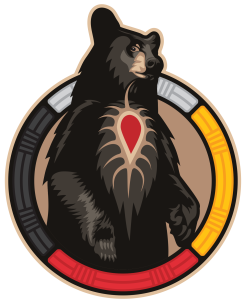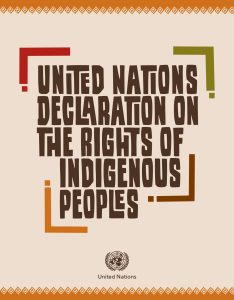
In Connection 2, you will learn that gaps exist between Indigenous and non-Indigenous peoples’ health and how Indigenous knowledge can help in closing those gaps.
The East: Seeing with Connection Experiences
You will begin Connection 2 in the East, where you will see initial experiences by watching a series of videos and engaging in checkpoint exercises.

Indigenous Knowledge to Close Gaps in Indigenous Health
The following video, Indigenous Knowledge to Close the Gaps in Indigenous Health, features a TED Talk with Dr. Marcia Anderson-DeCoteau (TEDx UManitoba, 2016) [18:35]. Dr. Anderson-DeCoteau outlines that gaps in Indigenous health exist due to both policy and racism. She defines 3 types of racism and highlights the importance of Western and Indigenous knowledges in being responsive to the health care needs of Indigenous peoples.
Video Transcript: Indigenous Knowledge to Close Gaps in Indigenous Health [Doc]![]()
Key Messages from the Video
Gaps in health exist for many reasons including previous government policies. Click each accordion below to learn more.
- The health care system was based in and values Western thinking and scientific inquiry. For example, clinical guidelines are based on randomized control trials and are relied upon in medicine as “the gold standard of evidence” (TEDx UManitoba, 2016, 6:34) .
- “There is no place or grade within the system of guidelines for Indigenous knowledge” (TEDx UManitoba, 2016, 6:56).
- These guidelines are not always helpful for Indigenous peoples “when the healthcare system does not meet their needs. This may be because they can’t get into the system or when they do they may not be treated well because of bias or racism” (TEDx UManitoba, 2016) .
Checkpoint 5: Racism as Cause of Death for Brian Sinclair
- Download and read the full story of Brian Sinclair (Brian Sinclair Working Group, 2017): Brian Sinclair Story [Doc]

- Consider the following questions, then write your response to them in the note taking space below. Why does this story matter to your learning? How will you apply what you have learned by reading this story? Download a copy of your notes before proceeding.
Checkpoint 6: Examining The United Nations Declaration on the Rights of Indigenous Peoples (UNDRIP)
This quote by Dr. Anderson-DeCoteau speaks to the intent of UNDRIP Article 24:
“It is Indigenous communities, families and individuals who have the right to define what knowledge, Western or Traditional or both, is relevant to their health and healing” (TEDx, 2016, 9:38).

Click on the following link and examine UNDRIP Article 24, #1 and #2 (PDF)![]()
Checkpoint 7: Relating the Seven Teachings to Your Practice
Use the next button or click through the 7 slides below to learn about the Anishinaabe Seven Grandfather Teachings. Click on the sound icon beside each word to hear Nipissing First Nation Elder, Evelyn McLeod naming each teaching in the Nbisiing dialect.
Connection 2 Summary
In Connection 2, we learned:
- There are gaps between Indigenous and non-Indigenous peoples’ health due to colonial policies, systems and racism
- Indigenous knowledge systems can help to bridge these gaps
- Both TRC Call to Action 22 and UNDRIP Article 24 encourage those working in health care settings to recognize the value of Indigenous knowledge systems and recognize that Indigenous peoples’ have a right to choose healing practices most relevant to them

To move on to Connection 3, click on the “Next: Connection 3: Two-Eyed Seeing as a Framework for Relationships and Learning →” button at the bottom right hand corner of this page.
References
Benton-Banai, E. (1988). The Mishomis book: The voice of the Ojibway. Red School House.
Brian Sinclair Working Group. (2017, September). Out of sight: A summary of the events leading up to Brian Sinclair’s death and the inquest that examined it and the interim recommendations of the Brian Sinclair Working Group. University of Manitoba. https://umanitoba.ca/faculties/health_sciences/medicine/education/undergraduate/media/Out_of_Sight.pdf![]()
TEDx UManitoba. (2016, April 13).Marcia Anderson-DeCouteau: Indigenous knowledge to close gaps in Indigenous health [Video] YouTube. https://www.youtube.com/watch?v=IpKjtujtEYI![]()
United Nations. (2007).United Nations declaration on the rights of Indigenous Peoples. https://www.un.org/development/desa/indigenouspeoples/wp-content/uploads/sites/19/2018/11/UNDRIP_E_web.pdf![]()

